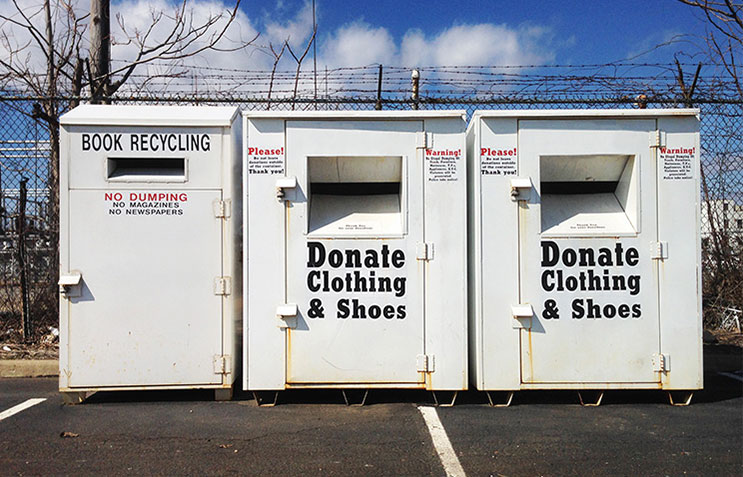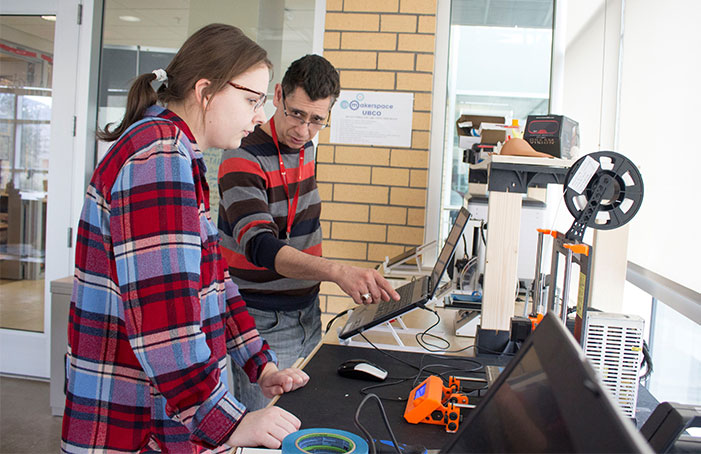
It was July 2018 when Dr. Ray Taheri, senior instructor of engineering at UBC Okanagan, heard the news: a woman had died after becoming trapped in a clothing donation bin in Vancouver—the fourth such death to have occurred in Canada since 2015. It was time to do something, he resolved.
Just as he had done before when tackling community issues, Dr. Taheri turned to what might seem an unlikely group: his first-year engineering students.
“I always look for community impact projects to give my students. I’m an educator, and the engineering discipline is about applying the science. When my students design something for the first time that can actually make a difference to people’s lives, it motivates them and they begin to believe in themselves.”
Dr. Ray Taheri, senior instructor of engineering at UBC Okanagan
The students did not disappoint: they came up with a number of innovative ideas to address the dangers posed by the donation bins, including a self-locking mechanism, weight sensors to prevent the hatch opening for anything heavier than a bag of clothes, and a way to unlatch the bin from the inside.
Dr. Taheri wanted to see the redesigned bins get out into the community—but this was not an easy feat. “Building thousands of clothing bins costs millions of dollars,” he notes. “We weren’t able to pursue it further.”
Then came more tragedy: two back-to-back deaths in clothing bins in Vancouver and Toronto in January of 2018. The situation was becoming urgent, and Dr. Taheri decided to get serious about it.
“I formed a taskforce that included a number of students and a couple of clinicians, and we decided to systematically solve this problem,” he says. The taskforce refined the first-year students’ designs, but getting to the prototype stage would require funding.
“We were desperate to get money for several months,” Dr. Taheri recalls. “I sent several hundred emails to many industry stakeholders, but I didn’t seem to be getting anywhere.”

Finally, in May 2019, Dr. Taheri received some good news: a $75,000 grant from Firstline Foundation to design and create a prototype and test retrofit kits for existing bin designs. And a month later the project came even closer to reality, with a $10,000 commitment from Toronto’s Rangeview Fabricating, a major clothing-bin manufacturer of the bins.
“That is a game changer,” says Dr. Taheri. “Getting an industry partner on board is a major step for us; you need a manufacturer on side to get things to market. Think about if you were designing a new, safer car seat. You can’t change every car seat on the road, and you’ll never implement it if you don’t have a major car manufacturer accepting it. Now we’re in a position to actually get our bins into the community. I’m very positive that we are going to get somewhere that we want very soon.”
The last time Dr. Taheri engaged his students in addressing community issues was two years ago, when he had his students design toys for children with autism—one of which is now being patented. A year before that, his students devised a personal lockable belonging cart for homeless people that is now in trials on the streets of Kelowna.
While it’s remarkable to imagine first-year students being charged with tackling such complex and profound issues, Dr. Taheri insists they’re more than capable of doing so.
“If they’re given a chance, they will do it,” he says. “I tell my students on day one, ‘If you want to be a good designer you have to be open-minded.’ An engineering designer is unbiased, compassionate, non-judgmental, receptive and humble. Sometimes these design projects and their solutions are outside of our comfort zone, but that’s where you reach the yield point of your mental capacity, and creativity prevails. I always strive to keep my students on their toes by giving them challenging design themes which extend their personal and professional horizons.”